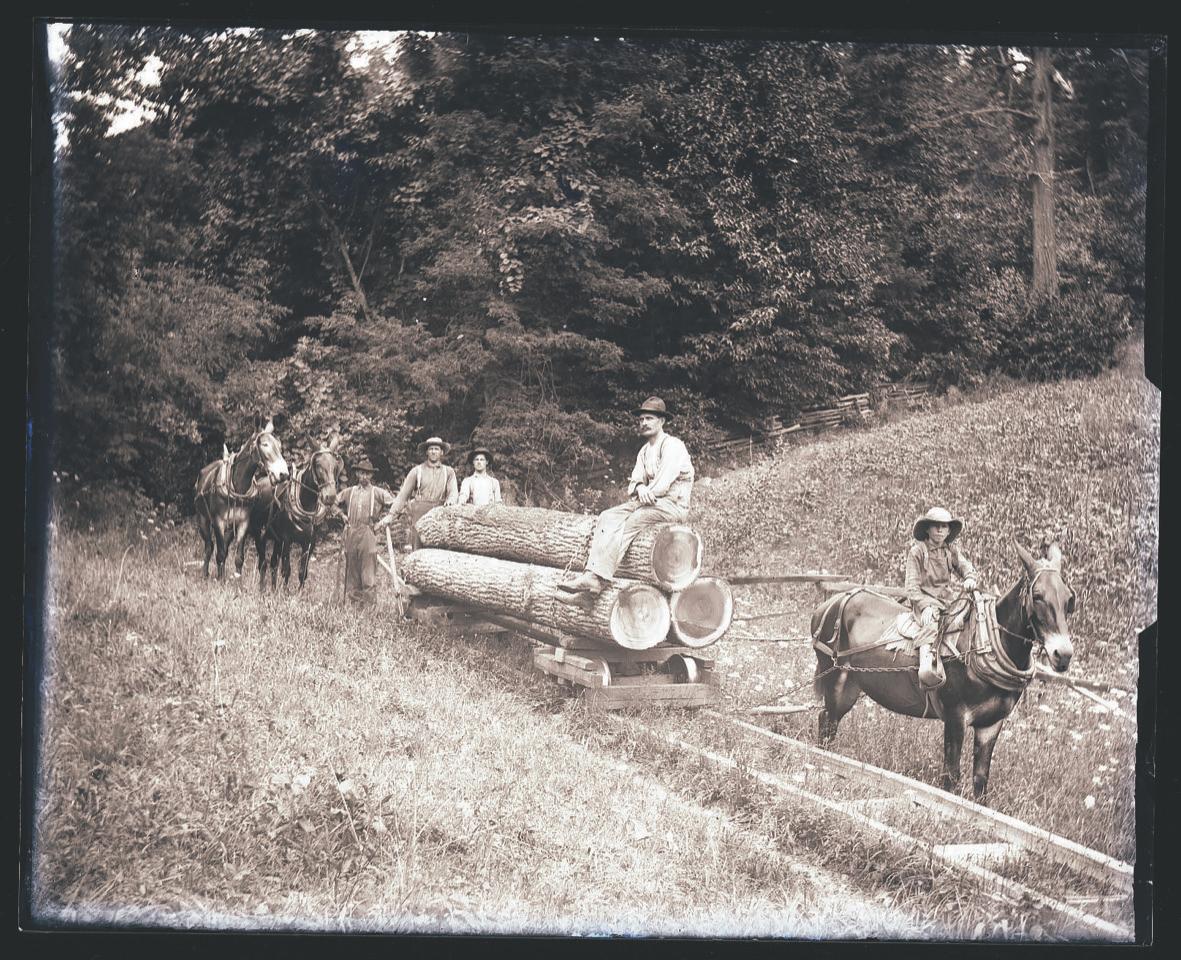

This photo is one of the logging images in the collection. (Provided by the T.R. Phelps Collection)
Photography was first invented in 1839. The concept of being able to use reflections within a contraption to capture light and create a lasting image - a photograph - changed civilization. The American Civil War was the first conflict portrayed with this new technology, allowing those on the home front to see the images that haunted soldiers on the frontlines.
The technology of photography developed first from the daguerreotype, which was primarily used from the 1840s through the 1850s and used a medium of silver-plated copper coated in chemicals in order to capture the light needed to produce the photograph. Ambrotype and then Tintype techniques were developed in the decades that followed, and it is these that are, by and large, the mediums on display in this exhibition. Ambrotypes are produced using glass plates instead of copper. These are made wet with emulsion and inserted into the camera while still wet in order to capture the exposure. Similarly, Tintypes use a thin sheet metal coated in the same way.
As photography became increasingly accessible during the past century, we take their near constant inclusion in our daily lives for granted.
Many of the photographs in this exhibit were scanned by the Historical Society of Washington County from images provided by the public. T.R. Phelps’ photographs were scanned from the original glass plates. Drew Walton used the new scanner in William King Museum of Arts’ digital lab to scan the plates. The scanning process is similar to the one that is used for documents, except a sheet of acetate has to be placed between the glass plate and the glass on the scanner to avoid damaging the plate.
BACK TO THE MAIN STORY: Look back at regional life at Abingdon museum